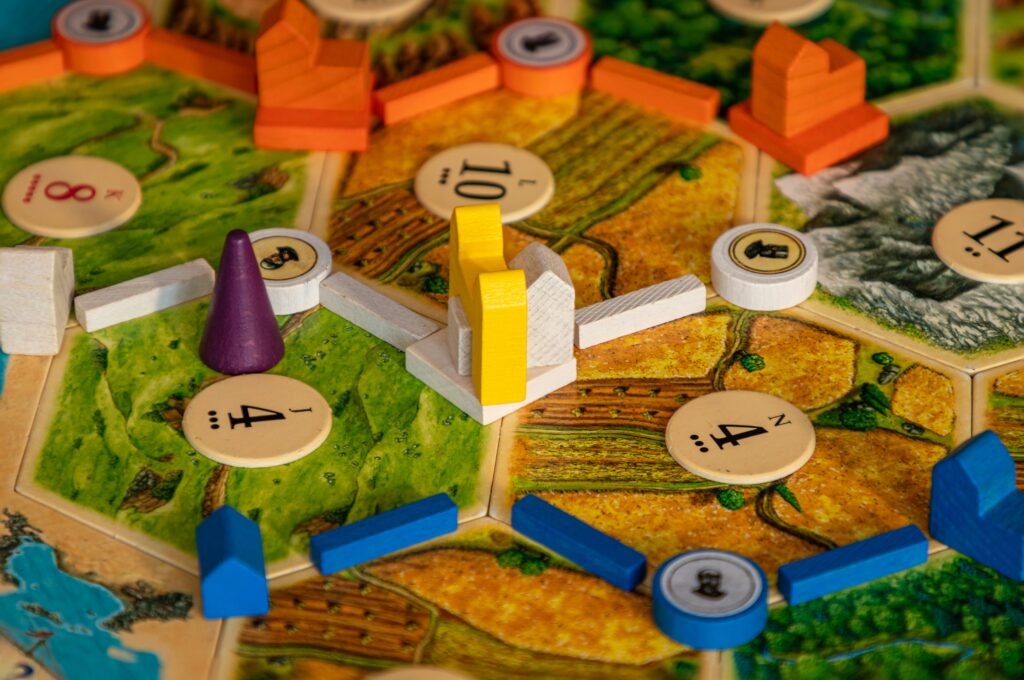In-game economies are more than background noise—they’re mirrors of real-world behavior. Players gather, spend, trade, and hoard just like people do outside the screen. When resources are limited or items become rare, you see the same psychological pulls: urgency, competition, even status games. Virtual value feels real when it reflects effort or scarcity.
Understanding how players interact with in-game currency, value systems, and scarcity tells us what really drives them. Is it the grind for prestige gear? Is it trading to gain an edge? Is it just about collecting and flexing? Currency systems aren’t just mechanics—they’re layers of motivation that pull players deeper into the world.
Game economies are designed engagement tools. They keep players coming back, strategizing, adapting. A well-tuned system makes a game feel alive. It rewards patience, timing, and smart decisions. In short, these economies aren’t throwaway features. They’re engines that power attention and connection.
In the world of games and virtual spaces, economics work a little differently—but the impact is real. One of the biggest splits you’ll see is between closed and open economies. Closed economies are walled gardens: you can earn or buy currency, but it stays inside the game. Think traditional mobile games. Open economies, on the other hand, let users trade, cash out, or even bring value across platforms. That’s where things start to feel more like real-world marketplaces.
Then there’s soft vs. hard currency. Soft currency usually comes easy—it’s earned through gameplay and used for low-stakes upgrades. Hard currency? That’s the stuff you buy with real money. When a game leans on hard currency, it usually means they’re targeting players willing to open their wallets. But it also signals deeper commitment. Players investing actual cash tend to be more locked in.
Virtual goods add another layer. Skins, weapons, furniture, avatars—players collect them the way people collect sneakers. Trading systems and ownership mechanics increase emotional attachment even without monetary value. People remember the first item they earned or crafted. That sense of ownership creates sticky behavior—and in smart systems, a sense of digital pride.
For developers and vlogging communities that orbit these virtual universes, understanding these economic backbones isn’t abstract. These rules shape content, influence monetization paths, and affect how creators interact with both games and their audiences.
In the vlogging game, resources aren’t just time and money. They’re energy, ideas, content bandwidth, and attention—both giving and receiving. Some creators are spendthrifts. They burn fast, chasing trends, uploading daily, splurging on gear, collabs, and ads. It can work for a while, especially if luck and timing line up. But burnout is real, and audiences can tell when the fuel’s running out.
Then there are the hoarders. These creators stockpile ideas, overthink scripts, polish edits for weeks, and wait for the perfect moment to post. The problem? That moment rarely shows up. Platforms reward momentum, not perfection. Hoarding can mean missing the window entirely.
Most successful vloggers fall in the middle. They know when to risk—and when to conserve. Sometimes it’s worth dropping a late-night reaction video with rough cuts if the topic’s trending. Other times, it’s smarter to hold back content until timing or format is right. It’s about calculating value, not just in views, but in signals like watch time, retention, and engagement that feed the algorithm.
Scarcity forces these decisions into focus. Limited time, limited attention, and now even platform throttling push creators to choose fast and smart. What you don’t post matters as much as what you do. The urgency isn’t fear—it’s strategy. The real players stay alert, agile, and intentional.
Game designers know one thing well: players stick around when they feel invested. That’s where reward loops and the sunk cost fallacy come in. A reward loop gives players something small to chase over and over, like a daily login bonus or a loot box after a win. Rinse and repeat. The sunk cost fallacy takes over when a player has already spent time, effort, or money—and starts thinking they should keep going just to make it all feel worth it.
Microtransactions and in-game currencies are built right into that mindset. Instead of shelling out $60 once, players drop a few bucks here and there for skins, boosts, or gear. It’s easy to lose track of how much is spent when it’s spread across tiny, frequent purchases. Plus, custom currencies (think gems instead of dollars) add an extra disconnect between spending and reality.
Then there’s the time vs. money equation. Games often give players two roads: grind for hours to unlock a feature, or pay a couple bucks and get it now. Time-rich players choose the grind, but the impatient—or those hooked on the loop—will pay. It keeps people in the game longer, even if they aren’t paying upfront. The system works because it combines convenience with emotional momentum.
Online games have become more than pastimes — they’re microcosms of our actual economies and behaviors. MMORPGs like EVE Online and World of Warcraft have long hosted complex economic systems. Prices fluctuate based on supply, demand, and even speculation. In some cases, economists have studied them as case studies for real markets. When a guild floods the market with crafted items, prices crash. When war cuts off trade routes, inflation kicks in. It’s all eerily familiar.
Mobile games, meanwhile, operate in a grayer zone. Engagement and monetization are tightly intertwined. Many rely on finely tuned psychological tactics. Daily streaks, limited-time items, and in-game currencies are designed to keep players coming back — and spending. The line between habit and manipulation is thin. For creators and designers, it’s a constant balancing act between maintaining attention and avoiding ethical landmines.
Player-driven marketplaces peel back another layer. These aren’t just economic systems — they’re social labs. You see bargaining, trust, betrayal, cooperation. Players create value not just with skills or gear, but with reputation. The dynamics echo everything from neighborhood trading to Wall Street. In 2024, as digital culture continues to merge with real life, these in-game economies show us who we are when given control — and when no one’s watching.
Pay-to-Win Dynamics and Finding Fair Balance
Modern gaming continues to face a growing challenge: the delicate balance between monetization and fairness. Players are quicker than ever to sense when a game starts to feel like it rewards payment more than skill — and trust begins to erode fast.
When Microtransactions Cross the Line
Monetization isn’t inherently bad. Cosmetic upgrades, optional passes, and convenience add-ons can enhance the player experience. The issue arises when purchases dramatically affect gameplay or progression.
- Competitive advantages tied to real money purchases undermine skill-based play
- Players feel pressured to spend in order to keep up, especially in PvP environments
- Communities fracture between paying users and those playing “for free”
The Impact of Inflation and Farming
In-game economies can spiral quickly when resource farming, item duplication, or exploitative trading systems are left unchecked. This disrupts fairness and creates frustration for casual and competitive players alike.
- Resource inflation devalues effort and time investment
- Farming bots and exploit loops break the intended progression
- Players who game the system end up outpacing others unfairly
Erosion of Challenge and Fun
When these systems go unchecked, they don’t just hurt the economy — they harm the sense of fair challenge. Players aren’t looking for perfection, but intentional game design that prioritizes earned skill, not wallet size.
For a deeper dive into this issue, check out: Balancing Challenge and Fun — A Game Designer’s Perspective
Digital economies aren’t just lines of code or coin balances. They shape how people feel, act, and connect. When a creator gets tipped or goes viral, it’s not just income—it’s validation. The structure of these systems drives powerful emotions: joy when something hits, frustration when effort flatlines, obsession when you’re chasing the next boost.
A big part of this is reputation. Social capital is currency now. Likes, shares, and comments aren’t just vanity—they’re signals that build influence and impact. In an ecosystem where attention is limited, creators trade in trust and relevance. It’s why a shoutout from the right person can do more than a paycheck.
But when the system breaks down—when spam outperforms sincerity, or when algorithms bury quality—communities feel it hard. People disconnect. Creators burn out. Incentives fall out of sync with values. And just like that, what should be a thriving digital neighborhood becomes a ghost town. Healthy economies don’t just distribute rewards—they keep people invested. When they fail, so does the culture around them.
A game’s economy isn’t background noise. It’s the core system that tells players what matters, what’s scarce, and what’s worth working for. Whether it’s coins, energy, materials, or loot boxes, these mechanics speak louder than a tutorial ever could. The economy sets the pace and guides player behavior—it’s interaction by design.
Getting it right takes more than math. Smart economy design leans into player psychology. What drives someone to grind for hours, trade with others, or buy into microtransactions? What feels fair versus what feels rigged? There are spreadsheets involved, sure. But understanding why players stay invested is what separates okay games from sticky ones.
The real test? How players spend their time and currency. Watch that, and you’ll see how well the system talks. Obsess over stats, but don’t ignore the human heartbeat behind every click.





